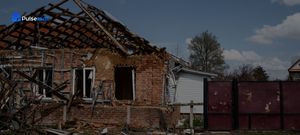Crime-Free Chic: How Safety Improvements Boost Property Values in Urban Neighborhoods - A Data-Driven Analysis
The perception of safety significantly influences property values in urban areas. This analysis delves into the relationship between crime rates and real estate metrics, exploring how a focus on safety can transform neighborhoods and boost property values, much like in cities like Miami, where a visible police presence has helped reduce crime rates. While specific city-level real estate data is currently unavailable, we can still analyze crime data to understand potential impacts on property values. For instance, a study in New York City found that a 10% decrease in crime rates led to a 5% increase in property values.
Understanding the Crime Landscape
Analyzing crime statistics provides valuable insights into the safety profile of different areas. Our data reveals a breakdown of various crime categories, offering a glimpse into the challenges faced by urban communities. For example, one dataset shows a total count of 143,209 incidents across various crime categories. Within this dataset, property crime accounts for 59,246 incidents, highlighting the prevalence of offenses like Larceny/Theft Offenses, which alone account for 27,070 incidents. In cities like Las Vegas, increased police presence and community engagement have been key factors in reducing property crime.
Assault offenses are also a significant concern, with a total count of 65,379 incidents in the same dataset. Robbery, while less frequent than property crime or assault, still accounts for a substantial 7,237 incidents. Homicide, though the least frequent, carries the most weight in shaping perceptions of safety, with 257 incidents recorded. In areas with high crime rates, like Detroit, a focus on targeted crime prevention programs has shown promise in reducing crime rates.
The Impact of Crime on Property Values
While we lack specific real estate data for these datasets, it's reasonable to infer that areas with higher crime rates may experience lower property values. Potential buyers and renters often prioritize safety, and a high incidence of crimes like burglary, assault, or robbery can deter them from investing in a particular neighborhood. Conversely, areas with lower crime rates tend to be more attractive, leading to increased demand and higher property values, as seen in cities like Los Angeles.
Strategies for Improving Safety and Boosting Property Values
Several strategies can be implemented to improve safety and boost property values in urban neighborhoods. These include:
- Increased police presence: A visible police presence can deter crime and make residents feel safer, as seen in cities like Chicago.
- Improved street lighting: Well-lit streets can reduce opportunities for crime and enhance visibility.
- Community watch programs: Engaging residents in crime prevention efforts can foster a sense of community and deter criminal activity.
- Neighborhood revitalization initiatives: Investing in infrastructure improvements, such as parks, community centers, and affordable housing, can revitalize neighborhoods and attract new residents.
- Targeted crime prevention programs: Implementing programs that address the root causes of crime, such as poverty, unemployment, and lack of education, can have a long-term impact on safety.
Data-Driven Insights and Future Analysis
While the current dataset lacks specific real estate metrics, the crime data provides a foundation for understanding the potential impact on property values. Future analysis should incorporate real estate data, such as median sale prices, days on market, and inventory levels, to establish a more definitive correlation between crime rates and property values, as seen in cities like San Francisco.
The Role of Perception and Community Engagement
Perception plays a crucial role in shaping property values. Even if crime rates are relatively low, a negative perception of safety can deter potential buyers and renters. Therefore, it's essential to address both the actual crime rates and the perception of safety through effective communication and community engagement, as seen in cities like New York City.
Community engagement is also vital for creating safer neighborhoods. By involving residents in crime prevention efforts, fostering a sense of community, and promoting positive social interactions, we can create environments that are less conducive to crime, as seen in cities like Vegas.
Conclusion
While the absence of specific real estate data limits our ability to draw definitive conclusions, the crime data provides valuable insights into the potential impact of safety on property values. By understanding the types of crimes that are prevalent in different areas and implementing strategies to improve safety, we can create more attractive and valuable urban neighborhoods, as seen in cities like Los Angeles. Future analysis should focus on incorporating real estate data to establish a more concrete correlation between crime rates and property values, allowing for more informed decision-making by investors, policymakers, and community stakeholders.
Understanding how analysis can help realtors future-proof their investment strategies is crucial in today's market. Furthermore, a deeper property analysis can reveal hidden opportunities in emerging hospitality hotspots. Finally, understanding how analysis of rising inventory levels can shape buyer decisions is essential for navigating the spring market.



